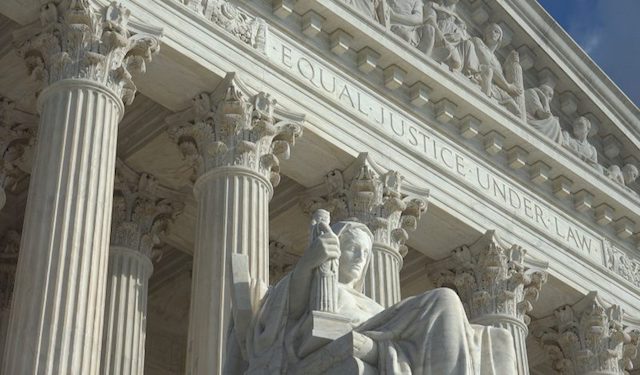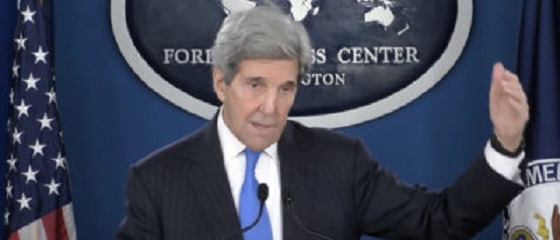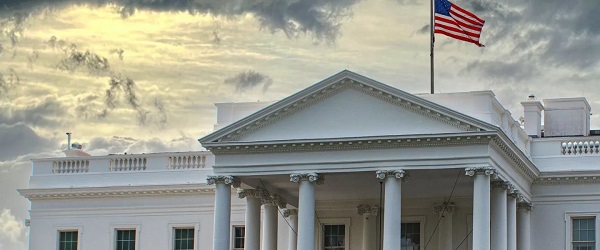Brownstone Institute
Tremendous Progress in Missouri v. Biden

From the Brownstone Institute
BY
As I explained previously, the government appealed the district court’s preliminary injunction in Missouri v. Biden, which would prohibit the government from pressuring social media companies to censor Americans online. Two days ago, a three-judge panel in the 5th Circuit court of appeals heard oral arguments from both sides.
Alex Gutentag over at Public yesterday provided a great summary of the judge’s responses during the hearing:
Yesterday the Fifth Circuit court heard oral arguments in the Missouri v. Biden case, and the judges did not hold back. One judge suggested the government “strongarms” social media companies and that their meetings had included “veiled and not-so-veiled threats.”
Another judge described the exchange between the Biden administration and tech companies as the government saying, “Jump!” and the companies responding, “How high?”
“That’s a really nice social media company you got there. It’d be a shame if something happened to it,” the judge said, describing the government’s coercive tactics.
Attorney John Sauer, representing Louisiana, masterfully argued that the government had repeatedly violated the First Amendment. He pointed to specific evidence of coercion in the Facebook Files.
“You have a really interesting snapshot into what Facebook C-suite is saying,” Sauer explained. “They’re emailing Mark Zuckerberg and Sheryl Sandberg and saying things like… ‘Why were we taking out speech about the origins of covid and the lab leak theory?’” The response, Sauer said, was, “Well, we shouldn’t have done it, but we’re under pressure from the administration.”
He also cited an email from Nick Clegg, Facebook President of Global Affairs, that pointed to “bigger fish to fry with the Administration — data flows, etc.”
On Monday, Public reported that these “data flows” referred to leverage the Biden administration had over the company; Facebook needed the White House to negotiate a deal with the European Union. Only through this deal could Facebook maintain access to user data that is crucial for its $1.2 billion annual European business.
But Sauer also made it clear that coercion was not the only basis on which the court could rule against the Biden administration. Joint activity between the White House and social media platforms would also be unconstitutional.
Sauer compared what the government had done to book burning. “Imagine a scenario where senior White House staffers contact book publishers… and tell them, ‘We want to have a book burning program, and we want to help you implement this program… We want to identify for you the books that we want burned, and by the way, the books that we want burned are the books that criticize the administration and its policies.”
Daniel Tenny, the attorney for the Department of Justice, was left nitpicking and misrepresenting the record. In one instance, he denied that Anthony Fauci and Francis Collins had hatched a plan to orchestrate a “takedown” of the Great Barrington Declaration. Why? Because, Tenny said, according to their emails, they actually planned a takedown of “the premises of the Great Barrington Declaration.”
Tenny also stated that social media companies had not removed any true content. From the case’s discovery as well as the Facebook Files we know that is far from true. Facebook, against internal research and advice, did remove “often-true content” that might discourage people from getting vaccinated. Facebook’s own emails clearly suggest that the company only did this due to pressure from figures within the Biden Administration.
Tenny also claimed that when Rob Flaherty, the White House director of Digital Strategy, dropped the F-bomb in an exchange with Facebook it was not about content moderation. In fact, it was precisely about content moderation and occurred during a conversation about how Instagram was throttling Biden’s account. Ironically, the account couldn’t gain followers because Meta’s algorithm had determined that it was spreading vaccine misinformation.
Later, Sauer demolished an earthquake hypothetical that Tenny had introduced to justify state-sponsored censorship. “You can say this earthquake-related speech that’s disinformation is false, it’s wrong,” Sauer said. “The government can say it’s bad, but the government can’t say, ‘Social media platforms, you need to take it down.’ Just like a government can’t stand at the podium and say, ‘Barnes and Noble, you need to burn the bad books, burn the Communist books, whatever it is.’ They can’t say take down speech on the basis of content.”
Based on this hearing, the plaintiffs in Missouri v. Biden may have a strong chance of winning. Biden’s DOJ simply had no valid arguments to present. The evidence is clear: the administration brazenly engaged in an unlawful censorship campaign and instrumentalized private companies to do its bidding. This total disregard for fundamental civil liberties will be a stain on the Democratic Party for years to come.
Matt Taibbi’s reporting on this at Racket News yesterday was likewise excellent. I especially appreciated his colorful account of our brilliant lawyer, John Sauer. A few excerpts:
Early in the afternoon, a three-judge panel met to decide whether or not to revoke a stay of Judge Terry Doughty’s sweeping July 4th order barring a battery of government agencies from contacting social media companies about content moderation. Biden administration counsel Daniel Bentele Hahs Tenny was under fire from the jump.
It was hard not to feel for Tenny. Sitting across from him was a packed table of anxious plaintiffs’ attorneys, including Missouri’s garrulous, tornado-like former Solicitor General John Sauer — the driving force behind the Missouri v. Biden legislation — as well as the current officeholder, a lean, plain-spoken lawyer with Jimmy Stewart vibes named Josh Devine. Tenny, an ashen, slouching figure, was alone. In a case of major historical import, likely headed to the Supreme Court, the federal government hadn’t even sent another lawyer to keep him company. Staring down at his table, he looked like Napoleon Dynamite at lunch.
Called first, Tenny read a speech. He made it through the first thirty seconds well enough, arguing that Doughty’s July 4th order would leave the government “powerless” to discourage social media companies from disseminating “untrue” statements in the event of a natural disaster. Then, almost right away, he stepped in it.
“To take another example,” Tenny went on. “If… a government official were to conclude that it was likely, although not certain, that posts on social media were part of a criminal conspiracy, for example regarding human trafficking… the government official would be powerless to bring those posts to the social media company’s attention.”
Judges Edith Brown Clement, Jennifer Walker Elrod, and Don Willett listened sleepily at first, but all three snapped awake at the words “criminal conspiracy.” Doughty’s July 4th order specifically exempted communications about “criminal activity or criminal conspiracies,” posts that “threaten the public safety,” and communications about things that are “not protected free speech.” Tenny’s remarks more or less immediately drove into this wall of exceptions.
“So you do not believe that either of those are covered by the exception or exclusion specifically contained in the injunction?” asked Elrod.
Things then went bad to worse for the government:
Before long judges were rattling off greatest hits of both the Missouri v. Biden evidence and Facebook Files material, the worst possible scenario. Elrod within minutes was referencing posts by officials like the White House’s Rob Flaherty expressing frustration that content like Tucker Carlson videos or Alex Berenson articles hadn’t been removed.
“What appears to be in the record are these irate messages from time to time from high ranking government officials that say, you didn’t do this yet,” she said. “It’s like ‘Jump!’ and ‘How High?’”
Tenny tried to reorient Elrod to the question of whether or not this constituted overt coercion. If you were coercing, he said, “You wouldn’t say, ‘I’m really mad.’ You would just say, ‘Do this or else,’ and the or else would be clear.”
Elrod, not buying it, launched into an extraordinary counter-argument, comparing the federal government to the mob:
If you’ll excuse me, it’s like if somebody is in these movies that we see with the mob or something. They don’t say and spell out things, but they have these ongoing relationships, and they never actually say, “Go do this or else you are going to have this consequence.” But everybody just knows…
I’m certainly not equating the federal government with anybody in illegal organized crime. But… there are certain relationships where people know things without always saying the “or else.”
Willett put the mob analogy in even plainer language, saying the government’s behavior was a “fairly unsubtle kind of strong-arming,” as in, “That’s a really nice social media platform you got there. It’d be a shame if something happened to it.”
Then our lawyer John Sauer’s took his turn delivering a barrage of evidence and pointed arguments like a caped crusader making short work of helpless thugs:
In the court gallery a few clerks winced at one another at certain points of Tenny’s address, the way people do at boxing matches when someone walks into a face shot. The effect got worse when Tenny walked off and a furious Sauer addressed the judges. While Tenny rambled and spoke in generalities, the loquacious, bespectacled Sauer — who appears descended from some ancient God of rage — tore into the government’s arguments with ferocity and specificity. Judges tried at various points to challenge him, but he kept hurling cites back so fast the queries got lost.
“I would direct the court’s attention to pages 70 to 75 and 80 to 86 of the District court’s opinion,” he’d say, “where he makes specific findings resulting in the conclusion that CISA and the Election Integrity Partnership were, quote, ‘completely intertwined…’”
Taibbi then placed the significance of this case into context, explaining why the case will almost certainly end up at the Supreme Court:
Missouri v. Biden is fast becoming the vehicle through which a diverse series of recent disclosures about government censorship, including the Twitter Files reports, is likely to be litigated at a national level. What was pooh-poohed as conspiracy theory even a year ago is now a cat-hair away from being addressed and potentially proscribed by the country’s highest court. For the issue to get there at all would in itself represent an incredible journey, but signs continue to accumulate that a rare major judicial reprimand of the intelligence and enforcement communities could actually happen, and soon, too.
It would be a mistake to read too much into hearings like yesterday’s. One never knows how judges will rule, even when they appear to show emotion and inclination in court. Sometimes, they’re playing Devil’s advocate. The appellate panel, charged with deciding whether or not to reinstate Doughty’s sweeping order, could easily surprise those who attended and rule against the plaintiffs. Either way, an answer is expected soon. Attorneys present gave estimates ranging from a few weeks to two months for the panel to rule on yesterday’s issue.
A crucial fact of this case, however, is that Doughty’s July 4th order has created a motivation for both sides to push forward to the Supreme Court as soon as possible. Doughty’s ruling, which described the current Internet censorship regime as “arguably… the most massive attack against free speech in United States history,” essentially said that the damage from current government-influenced content moderation schemes may be so extreme that they must be completely enjoined until courts can determine how bad they are. That ruling was a major victory for the plaintiffs, and if the July 14th stay by the Fifth Circuit Court of Appeals remains in place, the plaintiffs will almost certainly appeal right away to a higher court in hopes of restoring their big win.
If the plaintiffs prevail, on the other hand, Doughty’s order will go back in force and the government will essentially be barred from meddling in the speech landscape. The administration has already argued on paper that this can’t be tolerated for any length of time, as any inability to pursue these “initiatives to prevent grave harm to the American people and our democratic processes,” causes the state “irreparable harm.” A more cynical interpretation might be that the “irreparable harm” is the prospect of the administration going without nuclear opinion-managing tools heading into an election year. Either way, a loss on the stay question will similarly motivate the administration to push for immediate Supreme Court consideration.
That’s all for now, folks. I will update you as soon as we get a ruling from the 5th Circuit. I remain optimistic that an eventual win at the Supreme Court will be the first major step toward completely dismantling the government’s censorship leviathan and restoring First Amendment free speech rights for all Americans.
Thank you for your continued support.
Reprinted from the author’s Substack
Brownstone Institute
Bizarre Decisions about Nicotine Pouches Lead to the Wrong Products on Shelves

From the Brownstone Institute
A walk through a dozen convenience stores in Montgomery County, Pennsylvania, says a lot about how US nicotine policy actually works. Only about one in eight nicotine-pouch products for sale is legal. The rest are unauthorized—but they’re not all the same. Some are brightly branded, with uncertain ingredients, not approved by any Western regulator, and clearly aimed at impulse buyers. Others—like Sweden’s NOAT—are the opposite: muted, well-made, adult-oriented, and already approved for sale in Europe.
Yet in the United States, NOAT has been told to stop selling. In September 2025, the Food and Drug Administration (FDA) issued the company a warning letter for offering nicotine pouches without marketing authorization. That might make sense if the products were dangerous, but they appear to be among the safest on the market: mild flavors, low nicotine levels, and recyclable paper packaging. In Europe, regulators consider them acceptable. In America, they’re banned. The decision looks, at best, strange—and possibly arbitrary.
What the Market Shows
My October 2025 audit was straightforward. I visited twelve stores and recorded every distinct pouch product visible for sale at the counter. If the item matched one of the twenty ZYN products that the FDA authorized in January, it was counted as legal. Everything else was counted as illegal.
Two of the stores told me they had recently received FDA letters and had already removed most illegal stock. The other ten stores were still dominated by unauthorized products—more than 93 percent of what was on display. Across all twelve locations, about 12 percent of products were legal ZYN, and about 88 percent were not.
The illegal share wasn’t uniform. Many of the unauthorized products were clearly high-nicotine imports with flashy names like Loop, Velo, and Zimo. These products may be fine, but some are probably high in contaminants, and a few often with very high nicotine levels. Others were subdued, plainly meant for adult users. NOAT was a good example of that second group: simple packaging, oat-based filler, restrained flavoring, and branding that makes no effort to look “cool.” It’s the kind of product any regulator serious about harm reduction would welcome.
Enforcement Works
To the FDA’s credit, enforcement does make a difference. The two stores that received official letters quickly pulled their illegal stock. That mirrors the agency’s broader efforts this year: new import alerts to detain unauthorized tobacco products at the border (see also Import Alert 98-06), and hundreds of warning letters to retailers, importers, and distributors.
But effective enforcement can’t solve a supply problem. The list of legal nicotine-pouch products is still extremely short—only a narrow range of ZYN items. Adults who want more variety, or stores that want to meet that demand, inevitably turn to gray-market suppliers. The more limited the legal catalog, the more the illegal market thrives.
Why the NOAT Decision Appears Bizarre
The FDA’s own actions make the situation hard to explain. In January 2025, it authorized twenty ZYN products after finding that they contained far fewer harmful chemicals than cigarettes and could help adult smokers switch. That was progress. But nine months later, the FDA has approved nothing else—while sending a warning letter to NOAT, arguably the least youth-oriented pouch line in the world.
The outcome is bad for legal sellers and public health. ZYN is legal; a handful of clearly risky, high-nicotine imports continue to circulate; and a mild, adult-market brand that meets European safety and labeling rules is banned. Officially, NOAT’s problem is procedural—it lacks a marketing order. But in practical terms, the FDA is punishing the very design choices it claims to value: simplicity, low appeal to minors, and clean ingredients.
This approach also ignores the differences in actual risk. Studies consistently show that nicotine pouches have far fewer toxins than cigarettes and far less variability than many vapes. The biggest pouch concerns are uneven nicotine levels and occasional traces of tobacco-specific nitrosamines, depending on manufacturing quality. The serious contamination issues—heavy metals and inconsistent dosage—belong mostly to disposable vapes, particularly the flood of unregulated imports from China. Treating all “unauthorized” products as equally bad blurs those distinctions and undermines proportional enforcement.
A Better Balance: Enforce Upstream, Widen the Legal Path
My small Montgomery County survey suggests a simple formula for improvement.
First, keep enforcement targeted and focused on suppliers, not just clerks. Warning letters clearly change behavior at the store level, but the biggest impact will come from auditing distributors and importers, and stopping bad shipments before they reach retail shelves.
Second, make compliance easy. A single-page list of authorized nicotine-pouch products—currently the twenty approved ZYN items—should be posted in every store and attached to distributor invoices. Point-of-sale systems can block barcodes for anything not on the list, and retailers could affirm, once a year, that they stock only approved items.
Third, widen the legal lane. The FDA launched a pilot program in September 2025 to speed review of new pouch applications. That program should spell out exactly what evidence is needed—chemical data, toxicology, nicotine release rates, and behavioral studies—and make timely decisions. If products like NOAT meet those standards, they should be authorized quickly. Legal competition among adult-oriented brands will crowd out the sketchy imports far faster than enforcement alone.
The Bottom Line
Enforcement matters, and the data show it works—where it happens. But the legal market is too narrow to protect consumers or encourage innovation. The current regime leaves a few ZYN products as lonely legal islands in a sea of gray-market pouches that range from sensible to reckless.
The FDA’s treatment of NOAT stands out as a case study in inconsistency: a quiet, adult-focused brand approved in Europe yet effectively banned in the US, while flashier and riskier options continue to slip through. That’s not a public-health victory; it’s a missed opportunity.
If the goal is to help adult smokers move to lower-risk products while keeping youth use low, the path forward is clear: enforce smartly, make compliance easy, and give good products a fair shot. Right now, we’re doing the first part well—but failing at the second and third. It’s time to fix that.
Addictions
The War on Commonsense Nicotine Regulation

From the Brownstone Institute
Cigarettes kill nearly half a million Americans each year. Everyone knows it, including the Food and Drug Administration. Yet while the most lethal nicotine product remains on sale in every gas station, the FDA continues to block or delay far safer alternatives.
Nicotine pouches—small, smokeless packets tucked under the lip—deliver nicotine without burning tobacco. They eliminate the tar, carbon monoxide, and carcinogens that make cigarettes so deadly. The logic of harm reduction couldn’t be clearer: if smokers can get nicotine without smoke, millions of lives could be saved.
Sweden has already proven the point. Through widespread use of snus and nicotine pouches, the country has cut daily smoking to about 5 percent, the lowest rate in Europe. Lung-cancer deaths are less than half the continental average. This “Swedish Experience” shows that when adults are given safer options, they switch voluntarily—no prohibition required.
In the United States, however, the FDA’s tobacco division has turned this logic on its head. Since Congress gave it sweeping authority in 2009, the agency has demanded that every new product undergo a Premarket Tobacco Product Application, or PMTA, proving it is “appropriate for the protection of public health.” That sounds reasonable until you see how the process works.
Manufacturers must spend millions on speculative modeling about how their products might affect every segment of society—smokers, nonsmokers, youth, and future generations—before they can even reach the market. Unsurprisingly, almost all PMTAs have been denied or shelved. Reduced-risk products sit in limbo while Marlboros and Newports remain untouched.
Only this January did the agency relent slightly, authorizing 20 ZYN nicotine-pouch products made by Swedish Match, now owned by Philip Morris. The FDA admitted the obvious: “The data show that these specific products are appropriate for the protection of public health.” The toxic-chemical levels were far lower than in cigarettes, and adult smokers were more likely to switch than teens were to start.
The decision should have been a turning point. Instead, it exposed the double standard. Other pouch makers—especially smaller firms from Sweden and the US, such as NOAT—remain locked out of the legal market even when their products meet the same technical standards.
The FDA’s inaction has created a black market dominated by unregulated imports, many from China. According to my own research, roughly 85 percent of pouches now sold in convenience stores are technically illegal.
The agency claims that this heavy-handed approach protects kids. But youth pouch use in the US remains very low—about 1.5 percent of high-school students according to the latest National Youth Tobacco Survey—while nearly 30 million American adults still smoke. Denying safer products to millions of addicted adults because a tiny fraction of teens might experiment is the opposite of public-health logic.
There’s a better path. The FDA should base its decisions on science, not fear. If a product dramatically reduces exposure to harmful chemicals, meets strict packaging and marketing standards, and enforces Tobacco 21 age verification, it should be allowed on the market. Population-level effects can be monitored afterward through real-world data on switching and youth use. That’s how drug and vaccine regulation already works.
Sweden’s evidence shows the results of a pragmatic approach: a near-smoke-free society achieved through consumer choice, not coercion. The FDA’s own approval of ZYN proves that such products can meet its legal standard for protecting public health. The next step is consistency—apply the same rules to everyone.
Combustion, not nicotine, is the killer. Until the FDA acts on that simple truth, it will keep protecting the cigarette industry it was supposed to regulate.
-

 National2 days ago
National2 days agoAlleged Liberal vote-buying scandal lays bare election vulnerabilities Canada refuses to fix
-

 Addictions2 days ago
Addictions2 days agoThe Death We Manage, the Life We Forget
-

 Alberta1 day ago
Alberta1 day agoNet Zero goal is a fundamental flaw in the Ottawa-Alberta MOU
-

 Crime2 days ago
Crime2 days agoVancouver police seize fentanyl and grenade launcher in opioid-overdose crisis zone
-

 Food1 day ago
Food1 day agoCanada Still Serves Up Food Dyes The FDA Has Banned
-

 Daily Caller2 days ago
Daily Caller2 days agoJohn Kerry Lurches Back Onto Global Stage For One Final Gasp
-

 National1 day ago
National1 day agoEco-radical Canadian Cabinet minister resigns after oil deal approved
-

 Addictions1 day ago
Addictions1 day agoManitoba Is Doubling Down On A Failed Drug Policy














